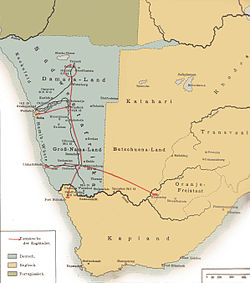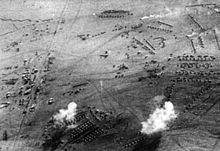
The German colonial empire constituted the overseas colonies, dependencies, and territories of the German Empire. Unified in 1871, the chancellor of this time period was Otto von Bismarck. Short-lived attempts at colonization by individual German states had occurred in preceding centuries, but Bismarck resisted pressure to construct a colonial empire until the Scramble for Africa in 1884. Claiming much of the remaining uncolonized areas of Africa, Germany built the third-largest colonial empire at the time, after the British and French. The German colonial empire encompassed parts of several African countries, including parts of present-day Burundi, Rwanda, Tanzania, Namibia, Cameroon, Gabon, Congo, Central African Republic, Chad, Nigeria, Togo, Ghana, as well as northeastern New Guinea, Samoa and numerous Micronesian islands.
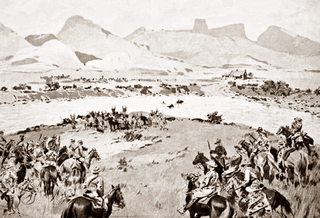
The Maritz rebellion, also known as the Boer revolt, Third Boer War, or the Five Shilling rebellion, was an armed insurrection in South Africa in 1914, at the start of World War I. It was led by Boers who supported the re-establishment of the South African Republic in the Transvaal. Many members of the South African government were themselves Boers who had fought with the Maritz rebels against the British in the Second Boer War, which had ended twelve years earlier. The rebellion failed, and its ringleaders received heavy fines and terms of imprisonment. One of them, Jopie Fourie, was executed.
Jan Christiaan Smuts, OM served served as Prime Minister of the Union of South Africa from 1919 to 1924 and from 1939 to 1948. He played a leading part in the post war settlements at the end of both world wars, making significant contributions towards the creation of both the League of Nations and the United Nations.

The African theatre of the First World War comprises campaigns in North Africa instigated by the German and Ottoman empires, local rebellions against European colonial rule and Allied campaigns against the German colonies of Kamerun, Togoland, German South West Africa, and German East Africa. The campaigns were fought by German Schutztruppe, local resistance movements and forces of the British Empire, France, Italy, Belgium, and Portugal.
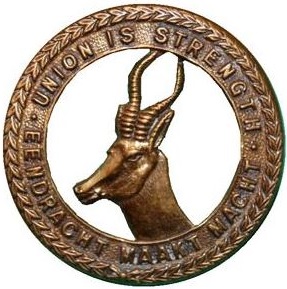
The South African Overseas Expeditionary Force (SAOEF) was a volunteer military organisation in World War I.
Naulila is a town and commune in the municipality of Ombadja, province of Cunene, Angola.
This is the history of South Africa from 1910 to 1948.
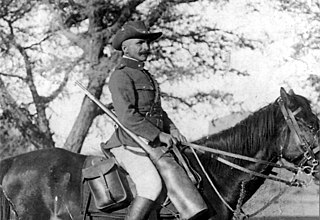
The Battle of Sandfontein was fought between the Union of South Africa on behalf of the British Imperial Government and the German Empire on 26 September 1914 at Sandfontein, during the first stage of the South West Africa Campaign of World War I, and ended in a German victory.
The Battle of Otavi fought between the militaries of the Union of South Africa and German Southwest Africa on 1 July 1915 was the final battle of the South West Africa Campaign of World War I. The battle, fought between Otavi mountain and Otavifontein, was a delaying action led by the German Major Hermann Ritter. Ritter's forces intended to buy the main German force at Tsombe several days so as they could harden their positions there. In the end, Botha's forces were able to rout Ritter's troops, leading to an overall breakdown in the German lines that brought the campaign to an end.

The Battle of Trekkopjes on 26 April 1915 was a German assault on the South African held railway station of Trekkopjes during the South West Africa Campaign of World War I. The South African Major Skinner had been ordered to defend Trekkopjes, and came into contact with a German column advancing on the station. Skinner withdrew back into Trekkopjes and dug in his forces. The German attack was repulsed with the help of armoured cars, leaving the South Africans victorious. The Battle of Trekkopjes saw the last German offensive in German South West Africa leaving them on the defensive for the remainder of the campaign.

German South West Africa was a colony of the German Empire from 1884 until 1915, though Germany did not officially recognise its loss of this territory until the 1919 Treaty of Versailles.

German South West Africa was a German colony in Africa, established in 1884 with the protection of the area around Lüderitz and abandoned during World War I, when the area was taken over by the British.
The battle of Kakamas took place in Kakamas, Northern Cape Province of South Africa on 4 February 1915. It was a skirmish for control of two river fords over the Orange River between contingents of a German invasion force and South African armed forces. The South Africans succeed in preventing the Germans gaining control of the fords and crossing the river.
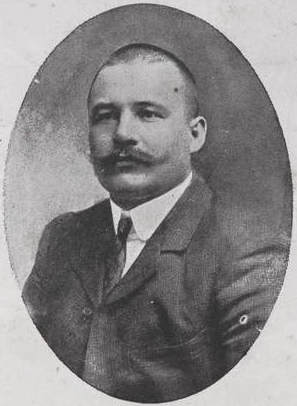
Manie Maritz, also known as Gerrit Maritz, was a Boer officer during the Second Boer War and a leading rebel of the 1914 Maritz Rebellion. Maritz was also a participant in the Herero and Namaqua genocide. In the 1930s, he became an outspoken Nazi sympathizer and proponent of Nazi Germany.

The German campaign in Angola took place before the official declaration of war between Germany and Portugal in March 1916. German and Portuguese troops clashed several times on the border between German South West Africa and Portuguese Angola. The Germans won most of these clashes and were able to occupy the Humbe region of southern Angola until Portuguese control was restored a few days before the British campaign out of South Africa defeated the Germans.

Josef Johannes "Jopie" Fourie was a Boer soldier. A scout and dispatch rider during the Boer War, he later took part in the Maritz Rebellion of 1914–1915 against General Louis Botha, the then Prime Minister of South Africa, and was executed by firing squad.
Andries Gerhardus de Wet was a South African soldier and founder of the Vrykorps in German South West Africa which tried to overthrow the British-aligned government of the Union of South Africa to establish German rule.

The Imperial Schutztruppe for German South West Africa was the official name of the military formation that maintained the German Empire in its colony of German South West Africa. The Schutztruppe are held responsible for numerous atrocities in the Herero and Nama uprising in 1904. During the First World War, the Schutztruppe was defeated by the troops of the Union of South Africa.
South Africa's participation in the First World War occurred automatically when the British Government declared war on Germany in August 1914. Due to her status as a Dominion within the British Empire, South Africa, whilst having significant levels of self-autonomy, did not have the legal power to exercise an independent foreign policy and was tied to the British declaration.

Barend Daniël Bouwer was a South African general in the Boer War (1899-1902) and the First World War (1914-1918).
